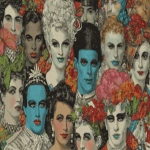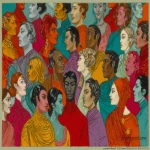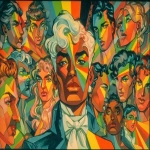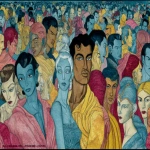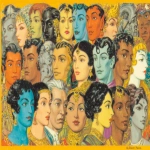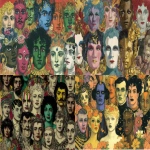Explore the Best AI Image Gallery

Cybersecurity in the Creative Realm: Navigating 2024s Trends
The creative industry, a vibrant tapestry of imagination and innovation, is increasingly intertwined with technology. While this technological embrace unlocks exciting possibilities, it also exposes creatives to new cybersecurity threats. Understanding the evolving landscape of cybersecurity in 2024 is paramount for safeguarding intellectual property, protecting personal data, and ensuring the smooth functioning of creative workflows.
Emerging Threats in a Digital Studio
The rise of artificial intelligence (AI) presents both opportunities and challenges for creatives. While AI tools can enhance productivity and spark new ideas, malicious actors are leveraging AI for sophisticated attacks like deepfakes, copyright infringement, and phishing campaigns targeting creative professionals.
- Deepfake Deception: AI-generated videos and audio can be incredibly convincing, potentially harming reputations or spreading misinformation within the creative community.
- Copyright Infringement: AI algorithms can be used to create derivative works without authorization, raising complex legal questions about intellectual property rights in the age of AI.
- Targeted Phishing: Cybercriminals are increasingly using personalized phishing attacks that exploit creative professionals trust and online activities, leading to data breaches and financial losses.
Protecting the Creative Ecosystem
Mitigating these threats requires a multi-faceted approach that emphasizes both technological safeguards and human awareness:
- Strong Passwords and Multi-Factor Authentication: Implementing robust password policies and enabling multi-factor authentication (MFA) for all accounts is crucial to preventing unauthorized access.
- Regular Software Updates: Keeping operating systems, applications, and creative tools up to date patches vulnerabilities that cybercriminals exploit.
- Secure Network Infrastructure: Utilizing strong firewalls, intrusion detection systems, and secure Wi-Fi networks can protect sensitive data from unauthorized access.
Ethical Considerations in a Secure Creative Space
As technology evolves, ethical considerations become increasingly important. The use of AI in creative processes raises questions about authorship, ownership, and the potential for bias:
- Authorship and Ownership: When AI tools contribute to creative works, who holds the copyright? Establishing clear guidelines for intellectual property rights in the age of AI is essential.
- Bias in Algorithms: AI algorithms can perpetuate existing biases, leading to unfair or discriminatory outcomes. Its crucial to ensure that AI tools used in creative processes are developed and deployed responsibly.
Looking Ahead: The Future of Cybersecurity in Creativity
The cybersecurity landscape is constantly evolving. Staying ahead of emerging threats requires a proactive approach:
- Continuous Education and Training: Creative professionals need to be aware of the latest cybersecurity risks and best practices.
- Collaboration and Information Sharing: The creative industry can benefit from sharing threat intelligence and best practices to build a more resilient ecosystem.
- Emerging Technologies for Security: Explore and adopt innovative technologies like blockchain, cryptography, and zero-trust security models to enhance cybersecurity protection.
By embracing a culture of cybersecurity awareness and adopting proactive measures, the creative industry can navigate the challenges of 2024 and beyond, fostering a secure and thriving environment for innovation and expression.
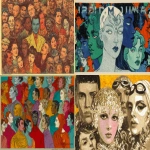



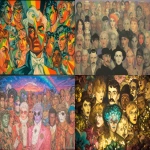
](https://images.ai-img.art/thumbnails/150/51c93500396faff4e7fa8b42bc68033067b16b2230e3496e95c482a581ff0fe9.webp)


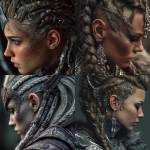


![**Representation: A dog acting as a private tutor to a child. The dog holds a ruler in its paw and stands at the blackboard to explain a dog diagram to the child. Graphic style: Line drawing, cartoon style, influenced by Franco-Belgian comics, thick black lines, simplified design, vector, black and white only, in the style of Keith Haring or the French comic strip "Alinéa". [IMPORTANT]: A single continuous line extending from one side of the image to the other, minimalist, strong outlines, line drawing, without lifting the hand, ultra-simplified, no shading, entirely white image, drawing created in the center of a sheet of paper. --ar 16:5** - Variations (Strong) by <@627984126871470085> (fast)](https://images.ai-img.art/thumbnails/150/f4e034998ccd869d8a061fd12017514fcd92210eb33d4222dc9b54716223f4dd.webp)
![**Representation: A teenager smiling while thinking about a friendly dog, a comic-style thought bubble with a friendly dog inside. Graphic style: Line drawing, cartoon style, influenced by Franco-Belgian comics, thick black lines, simplified design, vector, black and white only, in the style of Keith Haring or the French comic strip "Alinéa". [IMPORTANT]: A single continuous line extending from one side of the image to the other, minimalist, strong outlines, line drawing, without lifting the hand, ultra-simplified, no shading, entirely white image, drawing created in the center of a sheet of paper. --ar 16:5** - <@627984126871470085> (fast)](https://images.ai-img.art/thumbnails/150/6fc850f638e3dee0c4b121acecad2c8419e02bdeac7f871d625f1003c1c3abe1.webp)




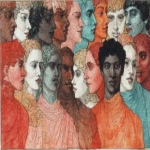




![**Representation: A dog acting as a private tutor to a child. The dog holds a ruler in its paw and stands at the blackboard to explain a dog diagram to the child. Graphic style: Line drawing, cartoon style, influenced by Franco-Belgian comics, thick black lines, simplified design, vector, black and white only, in the style of Keith Haring or the French comic strip "Alinéa". [IMPORTANT]: A single continuous line extending from one side of the image to the other, minimalist, strong outlines, line drawing, without lifting the hand, ultra-simplified, no shading, entirely white image, drawing created in the center of a sheet of paper. --ar 16:5** - <@627984126871470085> (fast)](https://images.ai-img.art/thumbnails/150/7a854648a81e51241dcca8d24dd6e3bfcf07ad1df51baf401c9b729f4cf411fa.webp)


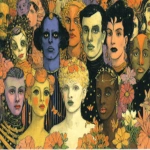
](https://images.ai-img.art/thumbnails/150/9d51c5e673b4f2068b7b01abc35425a06f173b76303adf9ad29ca14302c25b18.webp)



](https://images.ai-img.art/thumbnails/150/157712d76865d557120f9baf988de3d0525225295a2789c89bf2c4a5a96a03d1.webp)
